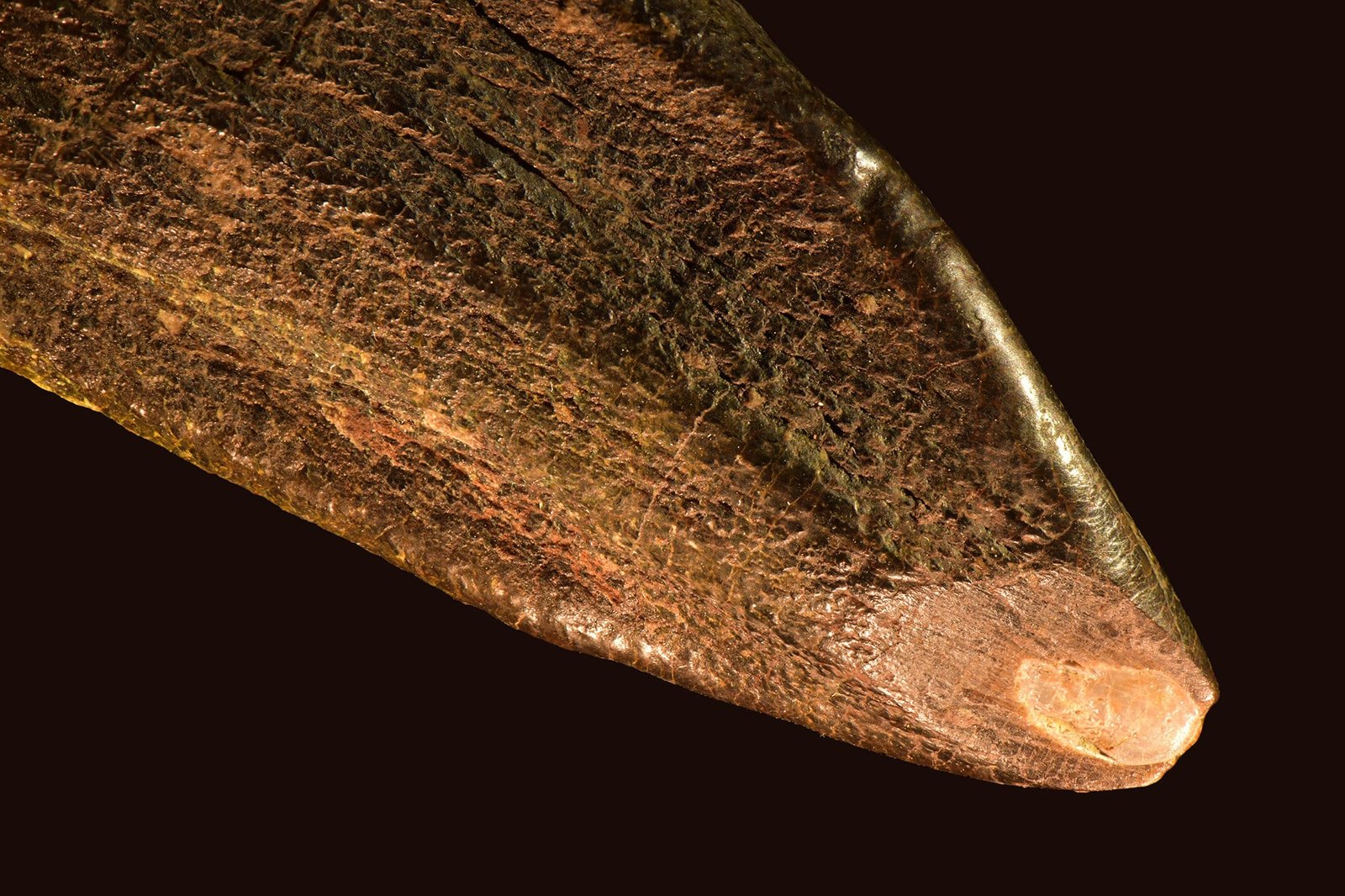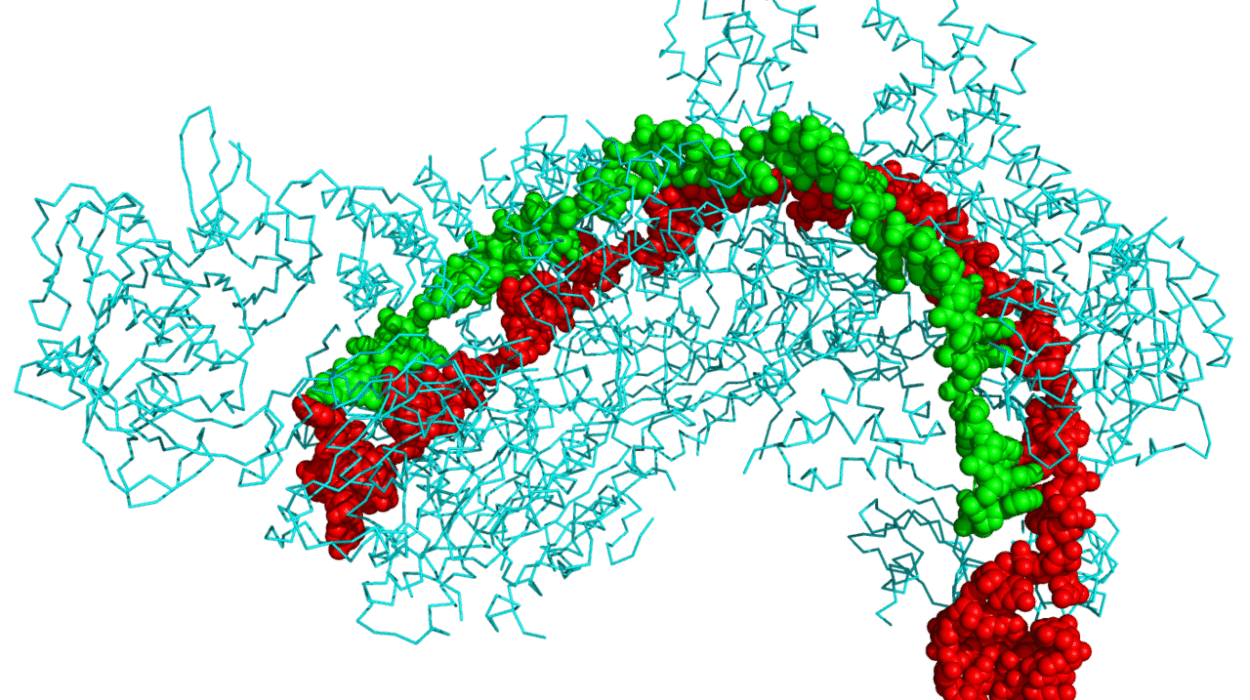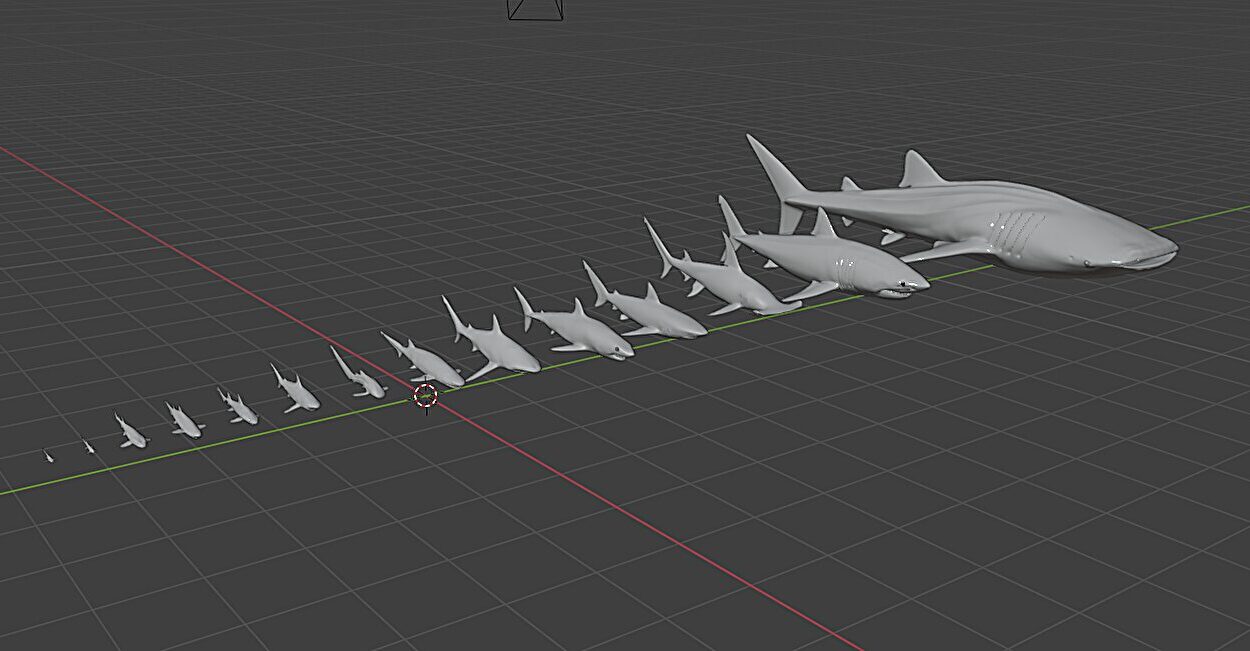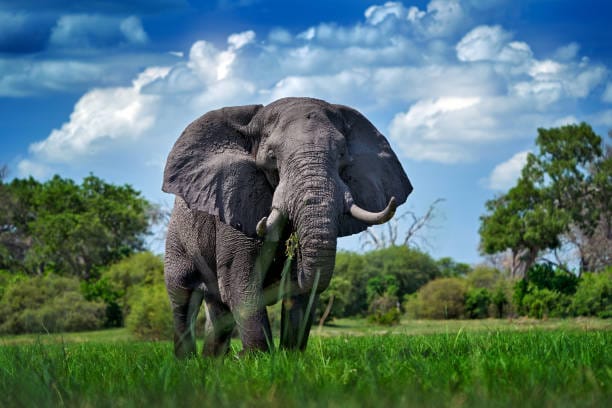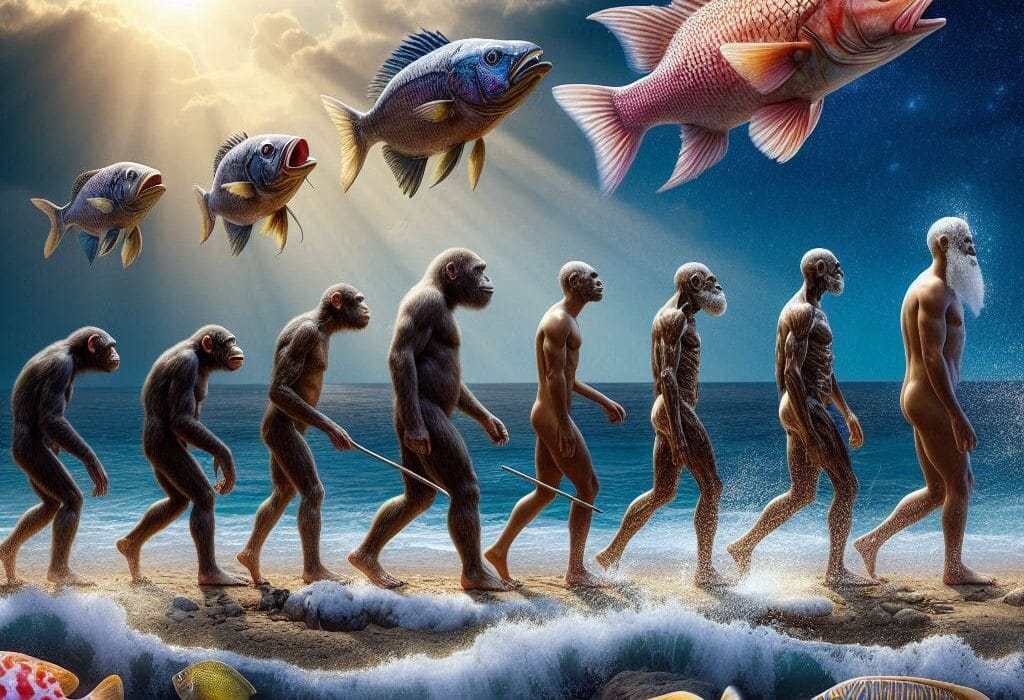Beneath layers of stone and silence, the ancient teeth of the Earth’s largest land animals have waited—tucked away in formations scattered across continents, silent sentinels of a world lost to time. Now, with the help of cutting-edge technology and a curious team of scientists, these teeth are speaking.
In a groundbreaking study published in Nature Ecology and Evolution, researchers have uncovered astonishing clues about the daily lives, dietary habits, and possible migratory behavior of long-necked dinosaurs known as sauropods. These weren’t fleeting guesses or imaginative leaps; they were etched in the fossilized enamel of teeth more than 150 million years old.
This isn’t just about what these creatures ate. It’s about how they lived, how they coexisted, and how they survived in landscapes as wild and diverse as their massive frames. With the help of a microscopic lens and a method called Dental Microwear Texture Analysis (DMTA), scientists are peeling back the layers of time, and the results are reshaping our understanding of dinosaur ecology.
Microscopes Over Mountains
At first glance, the wear on a tooth seems trivial—a scratch, a chip, a patch dulled by a bite. But to the trained eyes of Dr. Daniela E. Winkler and her colleagues, these tiny abrasions are a language. Every scratch, every groove in the enamel, is a coded message from the past. It tells a story about what the dinosaur was chewing, whether the plant was soft or gritty, and what kind of environment it was found in.
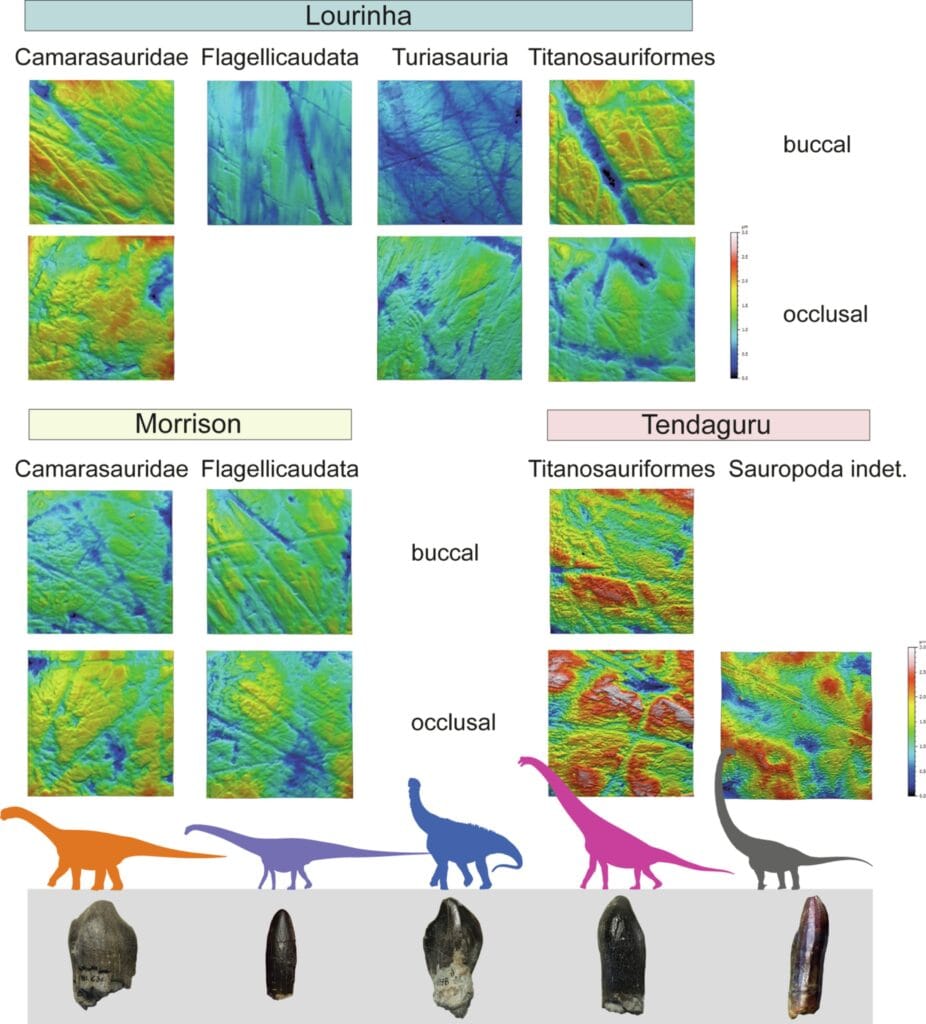
Winkler, a postdoctoral researcher at Kiel University, led the team alongside Dr. Emanuel Tschopp and Ph.D. student André Saleiro. Together, they applied DMTA—previously used to study mammalian diets—to sauropod teeth from three globally significant fossil formations: the Morrison Formation in the U.S., the Lourinhã Formation in Portugal, and the Tendaguru Formation in Tanzania.
Across 39 individuals and 322 3D tooth surface scans, they scrutinized the microscopic topography left by feeding—textures invisible to the naked eye, but vibrant with meaning under the microscope. These weren’t just fossils; they were environmental archives, holding the final meals of giants.
When Teeth Become Time Machines
The idea that diet and behavior could be reconstructed from wear patterns is not entirely new. But the application of this method to such massive, ancient creatures marked a pioneering moment in paleontology.
And what emerged from that analysis was anything but expected.
The flagellicaudatans, a group that includes the iconic Diplodocus, showed a wide range of wear textures. That diversity suggests they were generalist feeders, happily browsing from different plants depending on availability. They might have dipped their necks low to sweep ferns or reached high for soft leaves. Their dental wear was as varied as a buffet menu, hinting at a flexible, adaptive lifestyle.
But the story shifted dramatically when the team looked at Camarasaurus. Despite being found in both Portugal and the western United States, the wear on these dinosaurs’ teeth was strikingly consistent. Like clockwork, their teeth bore similar marks—year-round, across thousands of kilometers and varied environments. Such uniformity defied the odds of random plant availability.
The evidence pointed to a bold theory: Camarasaurus may have migrated seasonally to follow specific food sources. In a Jurassic world with pronounced wet and dry seasons, this behavior would have been a clever survival strategy—chasing abundance, avoiding scarcity, and always returning to the food that wore their teeth just so.
Sandstorms and Survival
Meanwhile, in what is now Tanzania, another picture unfolded. The sauropods from the Tendaguru Formation, particularly the titanosauriforms, showed a dramatically different kind of dental wear—coarser, deeper, more intense. This wasn’t simply from chomping harder. It was environmental.
Back in the Late Jurassic, the region sat near a vast desert belt. Winds often blew quartz-rich sand onto the vegetation. The dinosaurs weren’t eating rocks—but the plants they consumed were coated in abrasive particles. That gritty diet left its mark on their enamel like sandpaper. The result was some of the most complex wear patterns ever recorded on sauropod teeth.
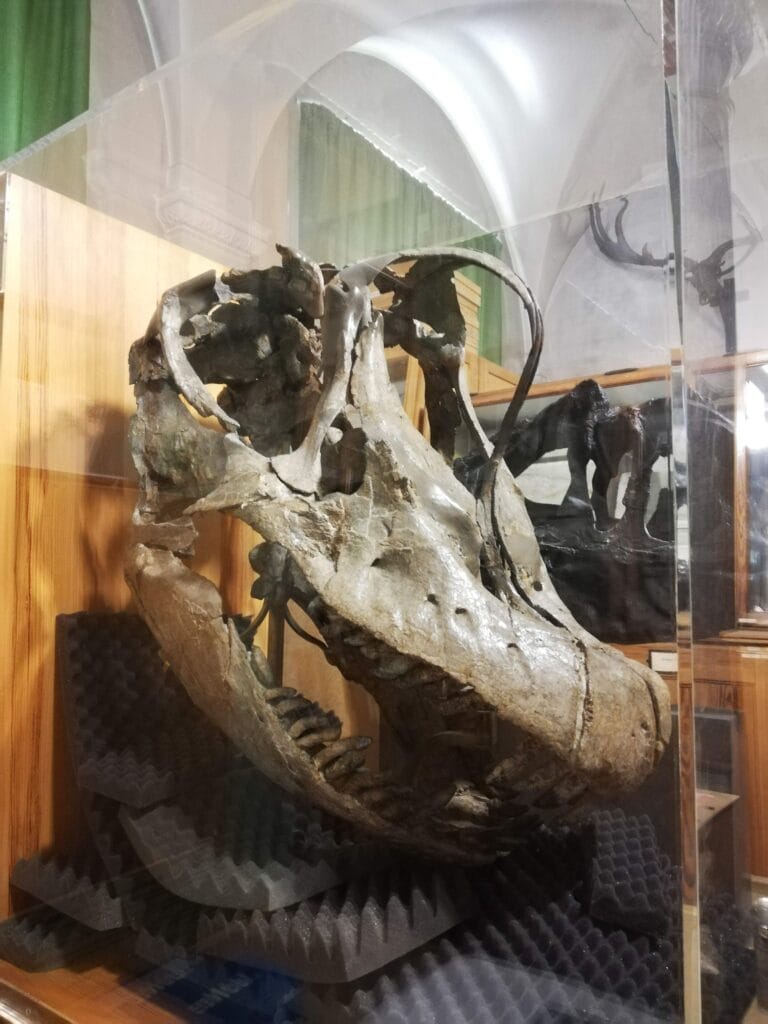
This revelation transformed the narrative. Differences in diet weren’t just about plant types—they were about climate, habitat, and the physical challenges of each landscape. These animals weren’t living in a one-size-fits-all world. They were navigating vastly different ecosystems, each with its own rules of survival.
Niche Sharing Among Giants
At first glance, it’s hard to imagine how a dozen 20-ton animals could coexist in the same environment without trampling over each other’s meals. Yet that’s exactly what the fossil record shows. The Morrison Formation alone, famous for its dinosaur diversity, housed an entire suite of giant herbivores.
So how did they manage?
The answer lies in niche partitioning—the idea that species divide up the environment, each focusing on a different food source, feeding height, or plant type to avoid direct competition. It’s a principle that still governs ecosystems today. Elephants and giraffes in Africa, for example, coexist peacefully because they feed at different levels and favor different plants.
Thanks to DMTA, researchers now know that sauropods likely did the same. The microwear signatures showed that even within the same formation, different species had distinct feeding strategies. Some were pickier eaters, while others were less selective. Some bit into gritty leaves, others preferred soft shoots. Their teeth were tools shaped by their dietary niches, and they left behind evidence of peaceful coexistence carved in enamel.
A Climate-Driven World
If plant types alone couldn’t explain the wear patterns, the researchers found a more powerful force at work: climate.
In drier regions like Tanzania, dental wear was more extreme. In temperate zones like Portugal, the patterns were less intense. These differences suggested that it wasn’t just what was available to eat—but how that food was physically altered by its environment—that shaped feeding behavior.
Wind, sand, and rainfall didn’t just mold the landscape; they influenced how teeth wore down, what plants were edible, and how animals adapted their diets. Climate was the hidden architect behind enamel textures and dietary evolution.
A Window into Lost Behavior
What’s perhaps most remarkable is that from nothing more than fossilized teeth, scientists are now able to reconstruct not just diets—but behavior. These ancient animals, silent for 150 million years, are speaking again. They’re telling us how they roamed, how they survived, and how they coexisted.
Dr. Tschopp describes it as “making behavioral statements about these enormous extinct animals.” And it’s true: With every new analysis, the team is uncovering insights into seasonal migration, environmental adaptation, and even social organization within species.
Notably, the position of the wear—whether on the chewing surface (occlusal) or the side of the tooth (buccal)—was carefully measured and accounted for. These subtle differences in wear location help sharpen the data’s accuracy and reveal even more about feeding mechanics and habits.
The Future Is in Fossil Enamel
The study is only the beginning. Winkler, Tschopp, and Saleiro are already planning follow-ups. They want to explore whether juvenile sauropods ate differently than adults—did growing giants need different nutrients? Did they have their own feeding niches to avoid competing with full-grown behemoths?
And what about smaller, island-dwelling dinosaurs like Europasaurus from Lower Saxony? How did isolation shape their evolution and dietary choices?
Every new tooth examined adds another thread to the tapestry of the past. With better tools, finer resolution, and more fossil material, the picture continues to grow richer—and more human. Because, in a way, these prehistoric giants weren’t so different. They moved for food. They adapted to their environment. They found ways to share the space they lived in.
They were wild, resilient, and wondrous.
And now, thanks to microscopic scratches and modern science, they are telling us their story—one tooth at a time.
Reference: Daniela E. Winkler et al, Dental microwear texture analysis reveals behavioural, ecological and habitat signals in Late Jurassic sauropod dinosaur faunas, Nature Ecology and Evolution (2025). DOI: 10.1038/s41559-025-02794-5. doi.org/10.1038/s41559-025-02794-5
